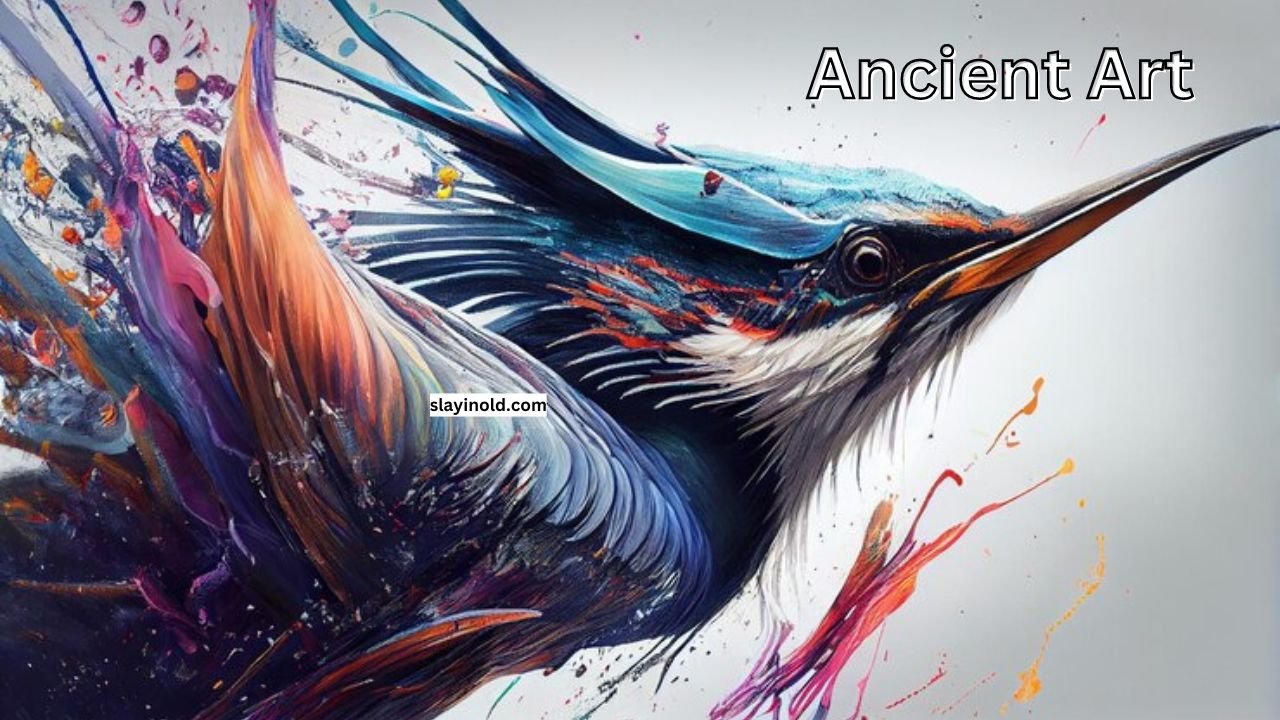Art is a window into the soul of a civilization, a tangible record of humanity’s thoughts, beliefs, and achievements. Among the most compelling types of art is ancient art, a form that transports us back thousands of years to the dawn of human creativity. From the intricate symbols carved into the walls of Egyptian tombs to the awe-inspiring Greek sculptures that embody ideals of beauty, ancient art offers a glimpse into the diverse cultural landscapes of the past. It speaks of a time when art was not just a form of aesthetic expression but an essential aspect of religious, political, and societal life.
What is Ancient Art?
Ancient art refers to the works created by early civilizations, often before written records became widespread. Spanning from prehistoric cave paintings to the grandiose sculptures of ancient empires, it includes various forms of expression such as pottery, painting, sculpture, and architecture. These early artworks were often imbued with profound religious, social, and symbolic meanings, playing a crucial role in rituals, governance, and everyday life.
Unlike modern art, which often emphasizes personal expression, ancient art was deeply communal and tied to the prevailing values and beliefs of the society in which it was created. Each piece tells a story not only of the individuals who made them but also of the cultures, mythologies, and historical moments that shaped their creation.
The Origins of Art in Prehistoric Times
The earliest examples of human creativity are found in the caves and rock shelters of prehistoric peoples. These ancient works, dating back tens of thousands of years, are often simple yet profound, showing the first inklings of symbolic thinking in human history. Prehistoric art largely took the form of cave paintings, engravings, and small sculptures, many of which depicted animals, human figures, and abstract symbols.
The Paleolithic era, known as the Old Stone Age, is particularly significant in the history of ancient art. It is during this time that some of the most famous cave paintings were created, including the well-preserved works in Lascaux, France, and the Chauvet Cave. These images provide invaluable insights into the early human mind, depicting not just the wildlife of the time but also the beginnings of human spirituality and ritual.
Symbolism in Ancient Art
Symbolism played an indispensable role in ancient art, often serving as a bridge between the physical and spiritual worlds. Whether in the form of hieroglyphics, totems, or sacred animals, symbols allowed ancient people to convey complex ideas about life, death, and the gods they worshipped. For instance, in ancient Egypt, the ankh symbolized life, while the scarab beetle was associated with rebirth and the sun. These symbols were not just decorative; they were part of a visual language that expressed the metaphysical beliefs of these cultures.
In many ways, the development of symbolic art was a precursor to the written language, with early artists using visual symbols to communicate stories, religious concepts, and social structures. From the ziggurats of Mesopotamia to the pyramids of Egypt, ancient architecture, too, often carried symbolic meaning, representing the power of the gods or the eternity of the soul.
Cave Paintings: The Dawn of Human Expression
Cave paintings are among the earliest known forms of art, dating back to the Upper Paleolithic period, around 40,000 years ago. These vibrant and detailed images, often found deep within caves, were created using natural pigments like charcoal and ochre. The most famous examples, such as those in the Lascaux Caves of France and the Altamira Caves in Spain, depict scenes of hunting, wildlife, and abstract shapes.
The meaning of these paintings remains a subject of debate among historians and archaeologists. Some believe that they were created as part of hunting rituals, intended to ensure a successful hunt, while others see them as early attempts to document daily life. Regardless of their purpose, these paintings are a testament to the creativity and resourcefulness of early humans, who found ways to express their relationship with the natural world long before the advent of written language.
Art in Ancient Civilizations: A Cultural Reflection
As human societies became more complex, so too did their art. Ancient civilizations such as Egypt, Mesopotamia, Greece, and Rome produced art that was not only beautiful but also deeply reflective of their cultural values, religious beliefs, and social structures. Unlike prehistoric art, which was often created by individuals or small groups, the art of ancient civilizations was frequently commissioned by rulers, priests, or other elites, and served specific religious or political purposes.
In many ancient cultures, art was closely tied to religion. The gods and goddesses of these civilizations were often depicted in human form, adorned with symbols of their power and authority. In Egypt, for example, the pharaohs were portrayed as divine rulers, with their statues and tombs designed to ensure their immortality. In Mesopotamia, the ziggurats served as both temples and symbols of the city’s connection to the divine.











